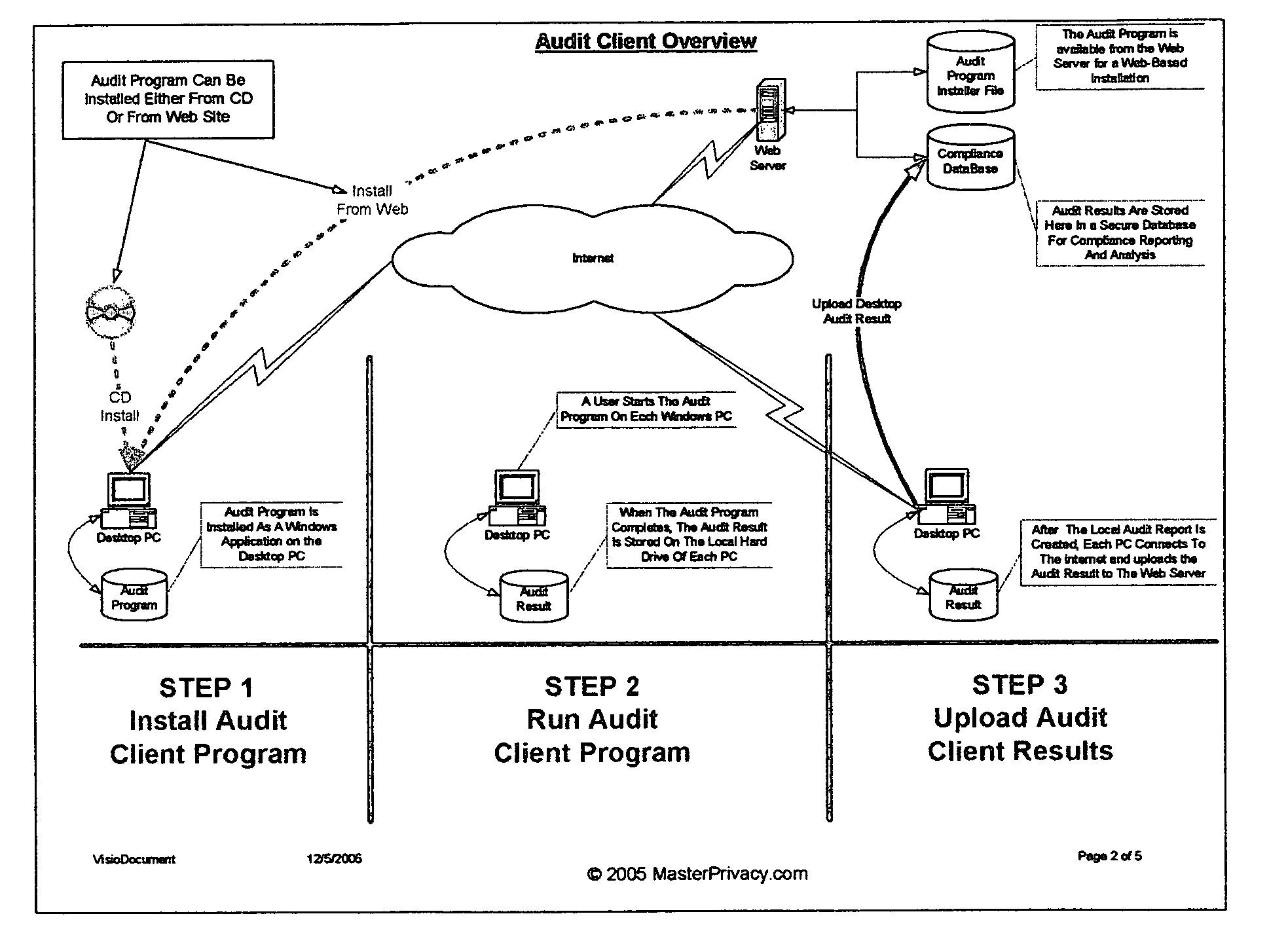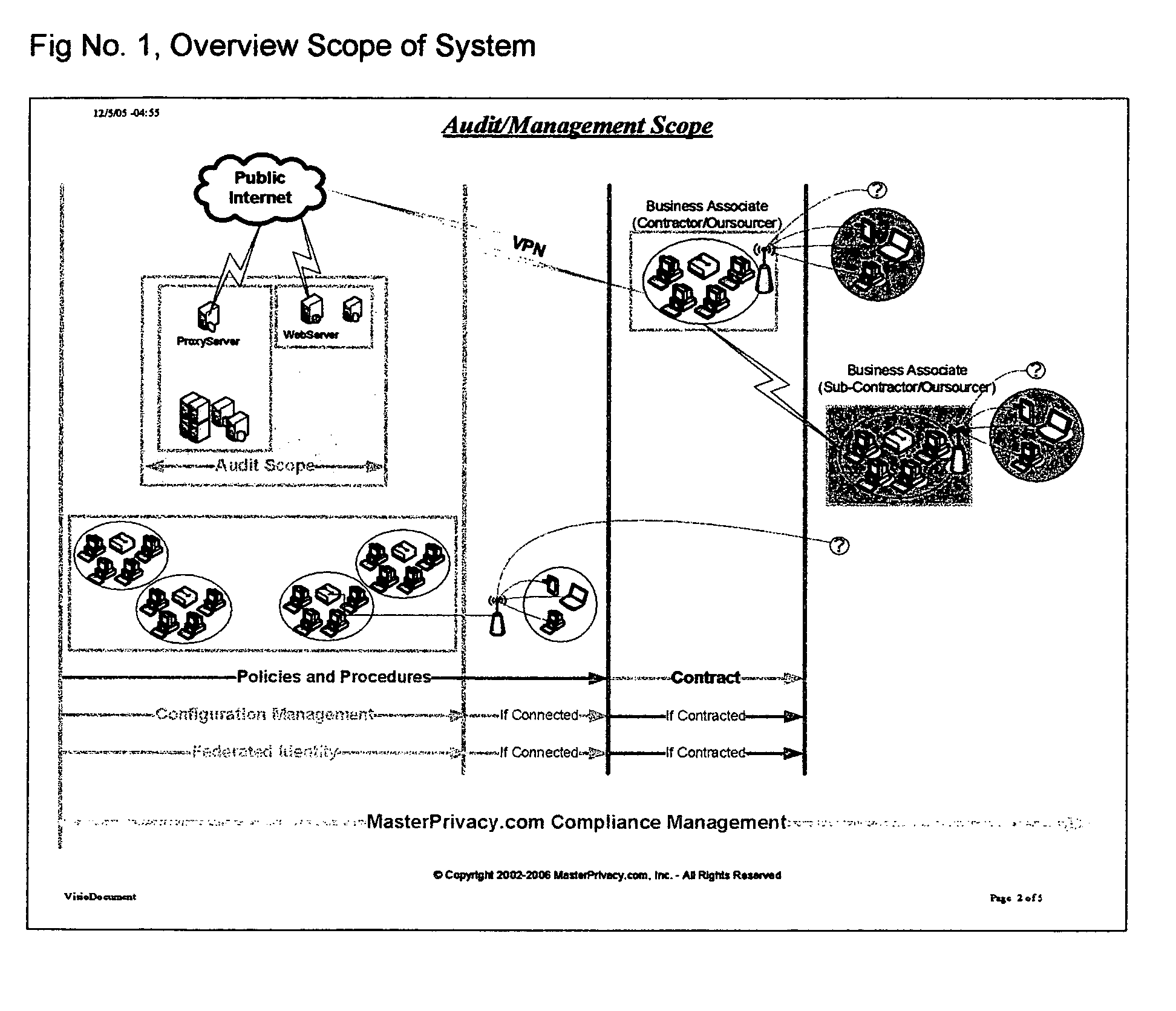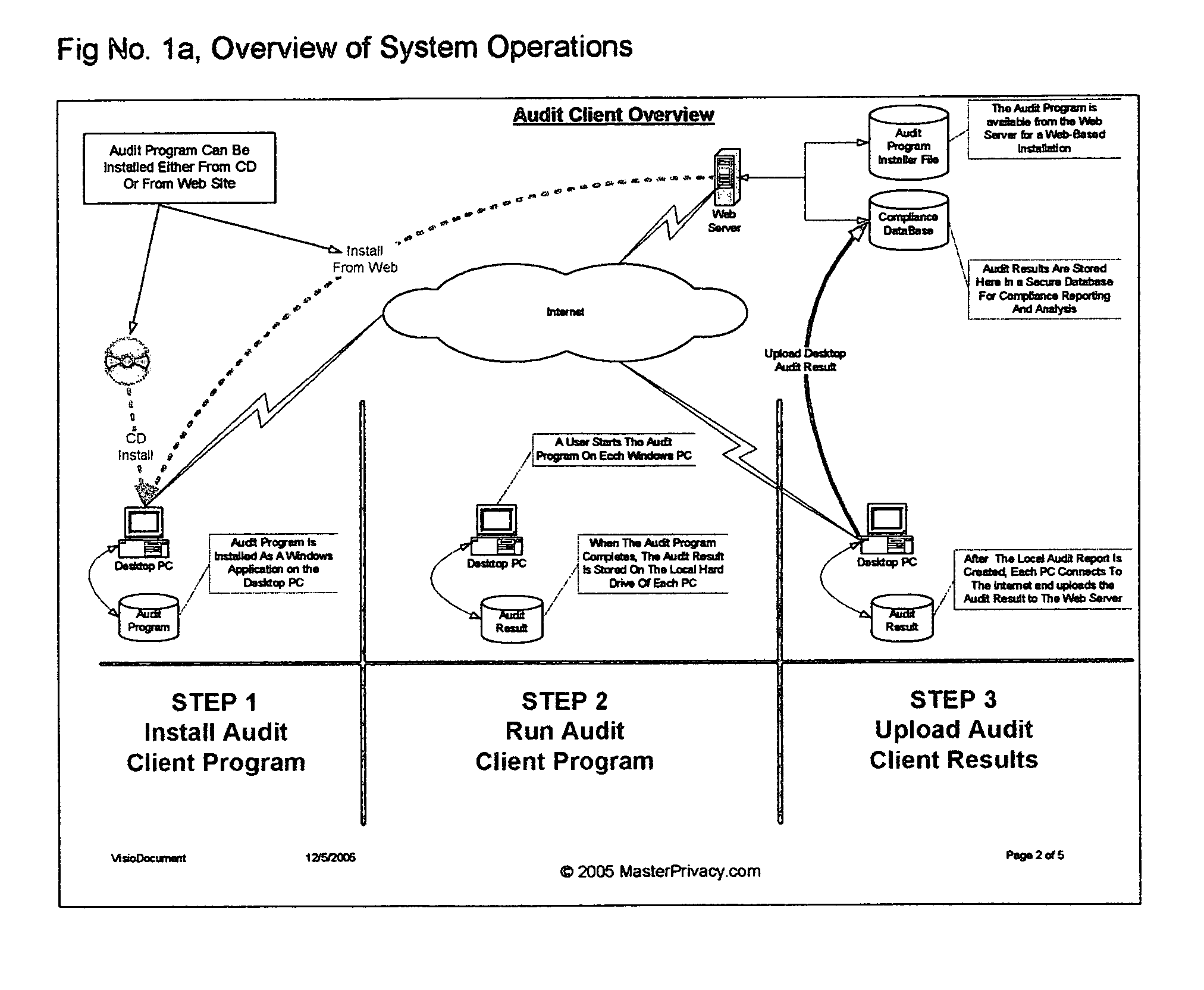Critical function monitoring and compliance auditing system
a technology of compliance auditing and monitoring and monitoring, applied in the direction of digital transmission, unauthorized memory use protection, instruments, etc., can solve the problems of loss of customers, poor overall compliance, significant potential liability exposure of ces, etc., and achieve the effect of unprecedented depth and breadth of knowledg
- Summary
- Abstract
- Description
- Claims
- Application Information
AI Technical Summary
Benefits of technology
Problems solved by technology
Method used
Image
Examples
Embodiment Construction
[0024] FIG. No. 1 Overview Scope of System
[0025] FIG. No. 1a, Overview of System Operations
[0026] FIG. No. 2, Install Audit Program details
[0027] FIG. No. 3, Run Audit Program details
[0028] FIG. No. 4, Uploading Audit details
[0029] FIG. No. 5, Compliance / Security Management details
[0030] FIG. No. 6, Autonomous Client Monitoring details
[0031] FIG. No. 7, Loosely Coupled Distributed System details
[0032] FIG. No. 8, Partitioned Data architecture details
[0033] Asynchronous process for requesting and installing Audit Client Program on Target Computer. Asynchronous process for requesting and performing Compliance Audit on distributed computers which may or may not be continuously connected to a network FIG. No. 1.
[0034] Begin Audit Client Program Installation Process FIG. No. 1a.
[0035] User Initiated Installation of Audit Client Program FIG. No. 2-7[0036] Upon receipt of the email from the Server containing Unique URL [0037] User “clicks” on the Unique URL in the body of the ema...
PUM
 Login to View More
Login to View More Abstract
Description
Claims
Application Information
 Login to View More
Login to View More - R&D
- Intellectual Property
- Life Sciences
- Materials
- Tech Scout
- Unparalleled Data Quality
- Higher Quality Content
- 60% Fewer Hallucinations
Browse by: Latest US Patents, China's latest patents, Technical Efficacy Thesaurus, Application Domain, Technology Topic, Popular Technical Reports.
© 2025 PatSnap. All rights reserved.Legal|Privacy policy|Modern Slavery Act Transparency Statement|Sitemap|About US| Contact US: help@patsnap.com



